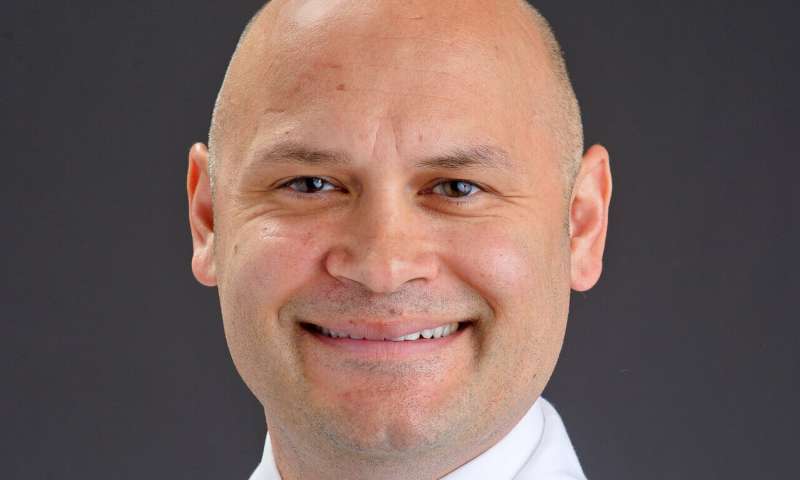Home » Health News »
Unique cells found in lung cancer patients may predict survival

Lung cancer is the leading cause of cancer-related deaths in the U.S. and most who are diagnosed with lung cancer do not survive five years. Non-small cell lung cancer (NSCLC) is the most common type where tumor cells shed from the main tumor circulate in the blood and settle in other organs and metastasize. In some cases, surgery can remove the primary tumor, but investigators from the University of Missouri School of Medicine and MU Health Care have identified a type of cell fusion between cancer cells and white blood cells called a tumor-macrophage fusion (TMF) where the size and number of the TMF cells may predict survival.
“We hypothesized that cancer cells are fusing with immune cells and by doing this they are manipulating the patient’s immune system so that it does not attack the cancer,” said Jussuf Kaifi, MD, assistant professor of surgery at the MU School of Medicine and MU Health Care. “If a lung cancer patient has these cells after a tumor removal surgery, we now believe the number and size of these cells directly correlates to the patient’s disease-free survival.”
Kaifi and his team of researchers studied NSCLC patients over three years and compared them to chronic, long-term smokers without lung cancer and healthy non-smokers without any known cancer. The researchers screened a total of 222 subjects by drawing blood from each participant and screening for the size and number of TMFs. The results showed TMFs at a significantly higher number in NSCLC patients (76.5%) than in the long-term smokers control group (6.9%). None of the 20 healthy non-smokers showed evidence of TMFs in the blood. The researchers also learned the presence of larger TMFs had a significant correlation with shorter disease-free survival. The three year disease-free survival for patients without giant TMFs was nearly 76%, but just under 49% for those with TMFs larger than 50 micrometers who underwent surgery to remove a cancerous tumor.
“This is the first study demonstrating the ability of TMFs to predict survival in patients with surgically treated lung cancer,” Kaifi said. “The ability to perform a simple blood analysis to detect circulating TMFs represents a signification potential benefit for these patients. It can help us identify which patients are at highest risk for recurrence after surgery. This will allow us to customize post-surgery chemotherapy treatment for each patient based on the presence of these cells, and may extend their survival.”
Source: Read Full Article


